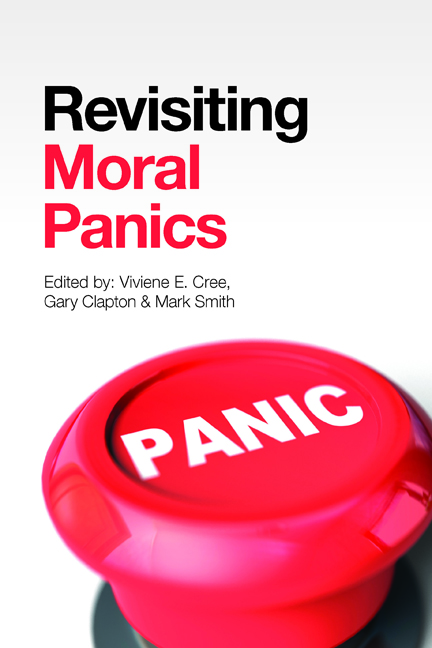Book contents
- Frontmatter
- Contents
- Contributors
- Preface
- Commentary moral panics yesterday, today and tomorrow
- Part One Gender and the family
- Part Two Moral panics in our time? Childhood and youth
- Part Three The state, government and citizens
- Part Four Moral crusades, moral regulation and morality
- Afterword the moral in moral panics
- Conclusion Moral panics and beyond
- Index
Twelve - Internet radicalisation and the ‘Woolwich murder’
Published online by Cambridge University Press: 08 March 2022
- Frontmatter
- Contents
- Contributors
- Preface
- Commentary moral panics yesterday, today and tomorrow
- Part One Gender and the family
- Part Two Moral panics in our time? Childhood and youth
- Part Three The state, government and citizens
- Part Four Moral crusades, moral regulation and morality
- Afterword the moral in moral panics
- Conclusion Moral panics and beyond
- Index
Summary
Introduction
Lee Rigby was murdered in London on 22 May 2013. He was returning to the army barracks in Woolwich where he was living when he was hit by a car and then murdered by two men wielding knives and a cleaver. This event took place in broad daylight on a busy street in the capital city. The brutality of the murder seemed incomprehensible, as was the apparent randomness of the attack: Lee Rigby was targeted because he was a soldier – his attackers knew nothing more about him. They even took time after the assault to talk to passers-by, some of whom recorded the interaction on their mobile phones before uploading the footage to social networking sites, including YouTube. Both men were subsequently shot and wounded by armed police officers and taken to hospital. In February 2014, Michael Adebolajo and Michael Adebowale were found guilty of murder and given sentences of whole-life and 45 years, respectively. Video footage of the event was used repeatedly by the mainstream media after the murder and again at the time of the trial, bringing a ‘real time’ dimension to the attack and increasing its shock value considerably. An anti-Muslim backlash erupted in various parts of the UK in 2013 and 2014, with a series of assaults on mosques and on men and women assumed to be Muslim.
It is not surprising, given the seriousness and the unexpected nature of this event, that there has been intense speculation as to why it might have happened, and what might be done to prevent it happening again. A familiar story has emerged, picked up and carried in all of the major news outlets, that the attackers had been ‘radicalised on the internet’, supporting a narrative of the internet as a place where extreme views are contained and where people who harbour vicious, murderous intent have a safe and secure home. The internet, and more specifically social media channels such as YouTube, Twitter and Facebook, are portrayed here as the sites through which vulnerable young men (and women) are radicalised. The phrase ‘cyber jihad’ has been coined to describe aspects of internet activity.
- Type
- Chapter
- Information
- Revisiting Moral Panics , pp. 149 - 158Publisher: Bristol University PressPrint publication year: 2015



